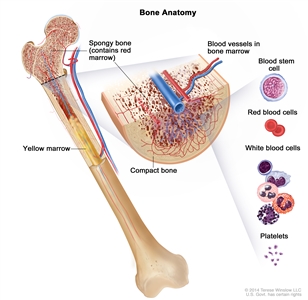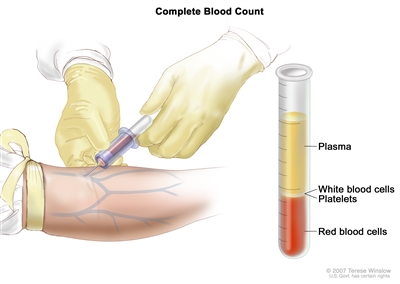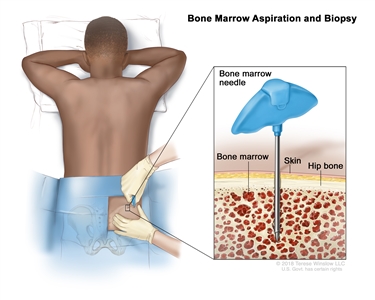Treatment Option Overview
There are different types of treatment for patients with hairy cell leukemia.
Different types of treatment are available for patients with hairy cell leukemia. Some treatments are standard (the currently used treatment), and some are being tested in clinical trials. A treatment clinical trial is a research study meant to help improve current treatments or obtain information on new treatments for patients with cancer. When clinical trials show that a new treatment is better than the standard treatment, the new treatment may become the standard treatment. Patients may want to think about taking part in a clinical trial. Some clinical trials are open only to patients who have not started treatment.
The following types of treatment are used:
Watchful waiting
Watchful waiting is closely monitoring a patient's condition, without giving any treatment until signs or symptoms appear or change.
Chemotherapy
Chemotherapy is a cancer treatment that uses drugs to stop the growth of cancer cells, either by killing the cells or by stopping them from dividing. When chemotherapy is taken by mouth or injected into a vein or muscle, the drugs enter the bloodstream and can reach cancer cells throughout the body (systemic chemotherapy). The way the chemotherapy is given depends on the type and stage of the cancer being treated. Cladribine and pentostatin are anticancer drugs commonly used to treat hairy cell leukemia. These drugs may increase the risk of other types of cancer, especially Hodgkin lymphoma and non-Hodgkin lymphoma. Long-term follow-up for second cancers is very important. Bendamustine is another anticancer drug that is being studied to treat hairy cell leukemia.
Learn more about Drugs Approved for Hairy Cell Leukemia.
Targeted therapy
Targeted therapy is a type of treatment that uses drugs or other substances to identify and attack specific cancer cells.
Other types of targeted therapies are being studied in the treatment of hairy cell leukemia, including:
- Vemurafenib, dabrafenib, and trametinib are types of kinase inhibitors that block certain proteins made by the mutated BRAF gene, which may help keep cancer cells from growing.
- Ibrutinib is a type of targeted therapy that blocks a protein called Bruton's tyrosine kinase (BTK), which may help keep cancer cells from growing.
Learn more about Drugs Approved for Hairy Cell Leukemia.
Surgery
Splenectomy is a surgical procedure to remove the spleen.
New types of treatment are being tested in clinical trials.
Information about clinical trials is available from the NCI website.
Treatment for hairy cell leukemia may cause side effects.
For information about side effects caused by treatment for cancer, visit our Side Effects page.
Patients may want to think about taking part in a clinical trial.
For some patients, taking part in a clinical trial may be the best treatment choice. Clinical trials are part of the cancer research process. Clinical trials are done to find out if new cancer treatments are safe and effective or better than the standard treatment.
Many of today's standard treatments for cancer are based on earlier clinical trials. Patients who take part in a clinical trial may receive the standard treatment or be among the first to receive a new treatment.
Patients who take part in clinical trials also help improve the way cancer will be treated in the future. Even when clinical trials do not lead to effective new treatments, they often answer important questions and help move research forward.
Patients can enter clinical trials before, during, or after starting their cancer treatment.
Some clinical trials only include patients who have not yet received treatment. Other trials test treatments for patients whose cancer has not gotten better. There are also clinical trials that test new ways to stop cancer from recurring (coming back) or reduce the side effects of cancer treatment.
Clinical trials are taking place in many parts of the country. Information about clinical trials supported by NCI can be found on NCI's clinical trials search webpage. Clinical trials supported by other organizations can be found on the ClinicalTrials.gov website.
Follow-up care may be needed.
As you go through treatment, you will have follow-up tests or check-ups. Some tests that were done to diagnose or stage the cancer may be repeated to see how well the treatment is working. Decisions about whether to continue, change, or stop treatment may be based on the results of these tests.
Some of the tests will continue to be done from time to time after treatment has ended. The results of these tests can show if your condition has changed or if the cancer has recurred (come back).



